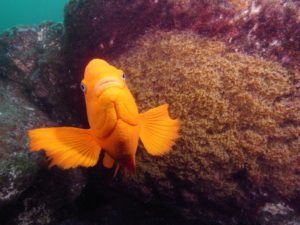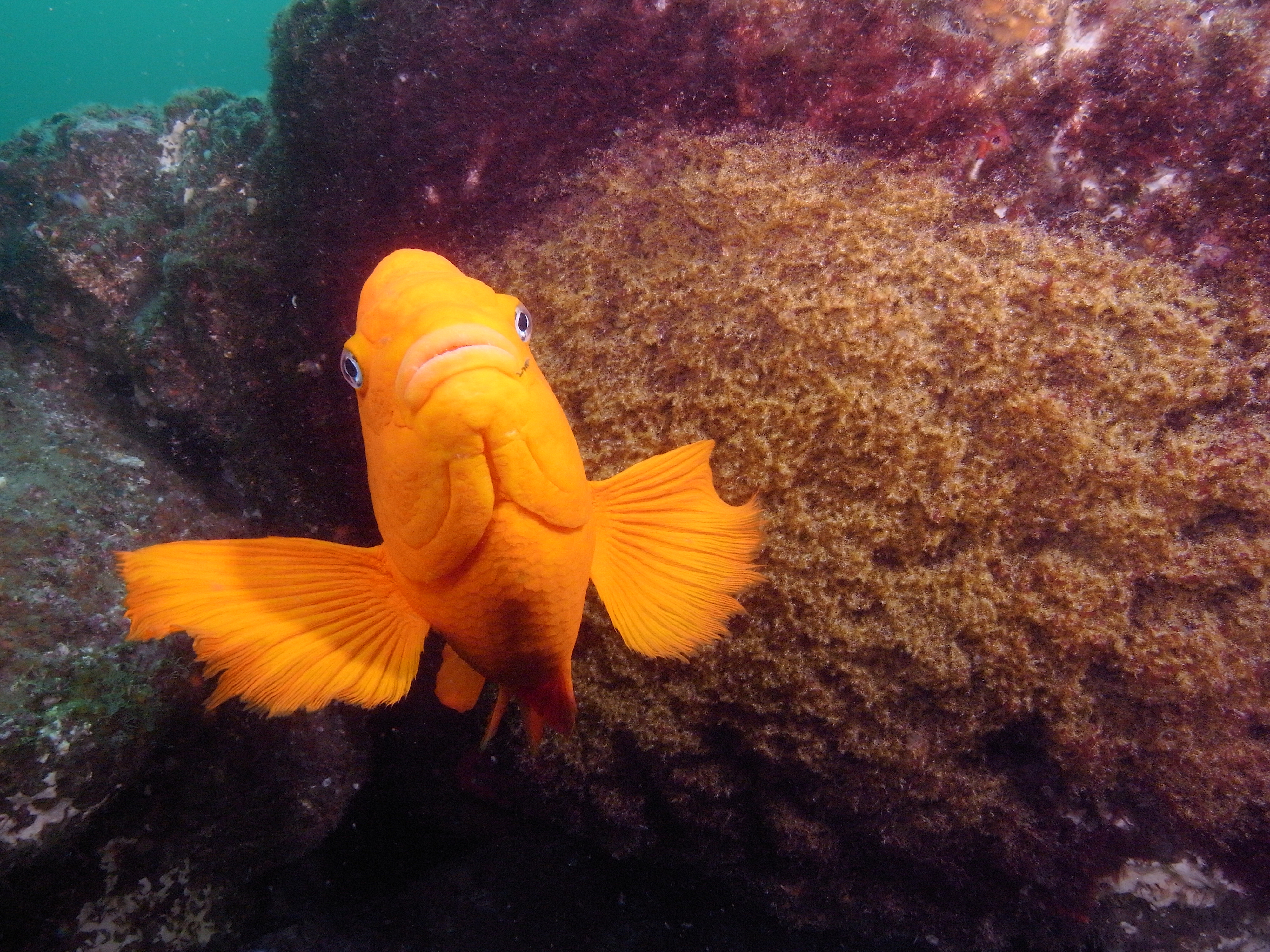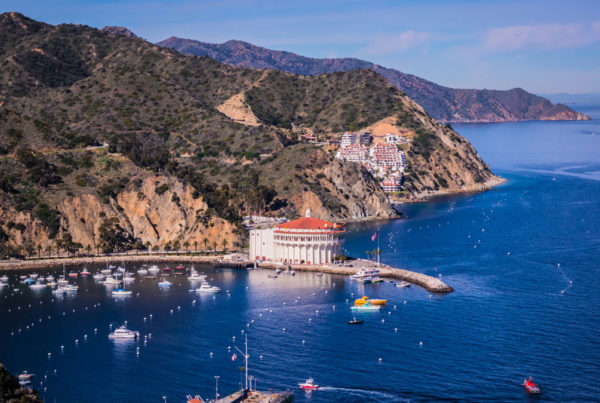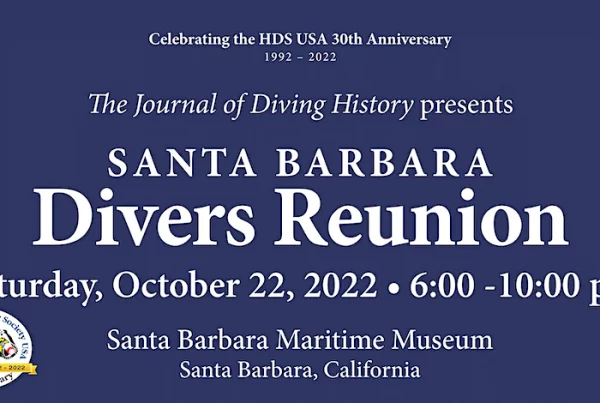
Just the name Goldfish Bowl makes you think of a fun, cute dive site. And it is. But there is a deeper, more advanced dive also here that a lot of people don’t know about (more on that later).
Goldfish Bowl has long been and remains to this day a favorites site for many dive charter boats out of Ventura and Santa Barbara to drop in newbie divers. It is relatively shallow with calm, clear, life-filled waters and a beautiful small kelp forest. Currents are generally mild and water clear.
The dive site gets its name from the numerous “goldfish” -——- bright golden orange Garibaldi — that frequent this site. If you are not familiar to southern California diving, Garibaldi are easy to approach. In fact, they often approach you. Named after a 19th century Italian general famous for wearing a bright orange vest into battle, the Garibaldi is the California State Marine Fish and has been a protected species for nearly a half a century.
Speaking of protection, Goldfish Bowl lies in a California State Marine Conservation area. The only animals that may be taken from here are lobster (in season) and pelagic finfish (yellowtail, tuna, etc.).
Don’t touch the rock scallops, which are numerous in spots. Rock scallops gain their name from the fact that they, well, look like rocks. You can spot them by their bright orange “smile” on the rock, although they often have muted brown/olive coloration. Approach slowly before they slam shut and you can usually get in close enough for a good macro photo of their bright orange mantle that, if you look closely, contains dozens of tiny eyes.
Other favorite macro-photo subjects include small reef fish — painted greenlings, ghost gobies, island kelpfish, a variety of blennies and the occasional blue-banded goby providing a dash of bright color. In addition, there are Christmas tree worms, and, if you look close on the stalks of the red gorgonians, tiny simnia snails. Due to their size, and the fact that they blend so well with red gorgonians, simnias can be challenging to photograph. But persist, as they make for an excellent image.
The red gorgonians also make for good wide-angle images. Their bright pink color against the muted blue-green background of the kelp forest can be dramatic. Throw in a few fish and a diver and you have achieved an excellent image. Another beautiful gorgonian to see here is the uncommon purple gorgonian. While not rare, you will not see more specimens than here at the west end of Anacapa Island. Their “branches” (actually an animal, not a plant) reach only about 12 inches, but you still have to get the photo for the beautiful color.
Being a protected area that includes reef fish you can expect to see larger and friendlier fish like the sheephead (they make for good photo material), fat calico bass, opaleye, halfmoons, and black perch. Occasionally, a large black sea bass will cruise through this area, usually in the summer and early fall. Unafraid of divers (protected not just here but in all California waters), they can reach five feet in length and several hundred pounds. Two other large fish here worth mentioning include halibut and bat rays on the sand near the reef.
Goldfish Bowl is often designated as a cove toward the west end of west Anacapa Island (actually three small islands that run east to west), but many look at it as just a general area near the west end of the island. The bottom topography along any of this area is similar no matter where you go — a moderate to gentle slope away from the island ending in jumbled boulders and course sand in about 40 to 45 feet of water, then a sloping sand bottom outward.
Outward from this general area off the west end of the west island and about a mile offshore is another reef that few divers know about. This strip of deeper reefs peaks out at about 45 feet and then drops to the sand at about 65 feet. Currents are more of a concern here and, for some reason, the visibility is typically not as good here as on the shallower reef. So why dive here? First, the macro photo opportunities are incredible and second, lobster. While not overly abundant here, you’ll likely find more lobster on the deeper outer reefs than on the inner reefs. Exact location? Cruise around out from Goldfish Bowl in about 65 feet of water with your depth finder and you’ll find this large reef structure.
But you don’t have to dive rarely visited reefs or grab bugs to enjoy Goldfish Bowl. Just head over to the island, plunk into the kelp want watch the “goldfish” swim by.
At-A-Glance
Skill Level: All on shallow reef;
advanced on deeper reef
Location: A general area around the last cove before the west end of the West Anacapa Island. GPS N34°00.888’, W119°26.265’
Access: Boat only. Several dive charter boats run out of both Ventura and Santa Barbara.
Depth Range: to 45 feet near shore, 65 feet on outer reef.
Visibility: Averages 40 feet
Photography: Great for both macro and wide-angle
Hunting: Only lobster and pelagic fish
Cautions: Currents on the outer reef










